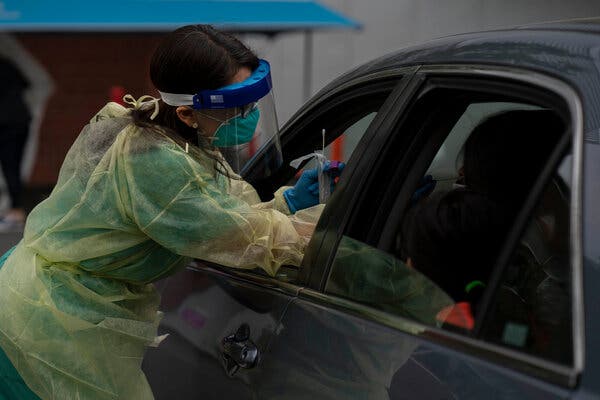In Oregon, Scientists Find a Virus Variant With a Worrying Mutation
#masthead-section-label, #masthead-bar-one { display: none }The Coronavirus OutbreakliveLatest UpdatesMaps and CasesRisk Near YouVaccine RolloutNew Variants TrackerAdvertisementContinue reading the main storySupported byContinue reading the main storyIn Oregon, Scientists Find a Virus Variant With a Worrying MutationIn a single sample, geneticists discovered a version of the coronavirus first identified in Britain with a mutation originally reported in South Africa.Coronavirus testing at the Virginia Garcia clinic in Hillsboro, Ore., last year. A variant found in Oregon may have evolved with a mutation that blunts the body’s immune response.Credit…Ruth Fremson/The New York TimesMarch 5, 2021, 12:38 p.m. ETScientists in Oregon have spotted a homegrown version of a fast-spreading variant of the coronavirus that first surfaced in Britain — but now combined with a mutation that may make the variant less susceptible to vaccines.The researchers have so far found just a single case of this formidable combination, but genetic analysis suggested that the variant had been acquired in the community and did not arise in the patient. “We didn’t import this from elsewhere in the world — it occurred spontaneously,” said Brian O’Roak, a geneticist at Oregon Health and Science University who led the work. He and his colleagues participate in the Centers for Disease Control and Prevention’s effort to track variants, and they have deposited their results in databases shared by scientists.The variant originally identified in Britain, called B.1.1.7, has been spreading rapidly across the United States, and accounts for at least 2,500 cases in 46 states. This form of the virus is both more contagious, and more deadly, than the original version, and is expected to account for most infections in America in a few weeks.The new version that surfaced in Portland has the same backbone, but also a mutation — E484K, or “Eek” — seen in variants of the virus circulating in South Africa, Brazil and New York City.Lab studies and clinical trials in South Africa indicate that the Eek mutation renders the current vaccines less effective by blunting the body’s immune response. (The vaccines still work, but the findings are worrying enough that Pfizer-BioNTech and Moderna have begun testing new versions of their vaccines designed to defeat the variant found in South Africa.)The B.1.1.7 variant with Eek also has emerged in Britain, designated as a “variant of concern” by scientists. But the virus identified in Oregon seems to have evolved independently, Dr. O’Roak said.Dr. O’Roak and his colleagues found the variant among coronavirus samples collected by the Oregon State Public Health Lab from an outbreak in a health care setting. Of the 13 test results they analyzed, 10 turned out to be B.1.1.7 alone, and one the combination.Other experts said the discovery was not surprising, because the Eek mutation has arisen in forms of the virus all over the world. But the mutation’s occurrence in B.1.1.7 is worth watching, they said.In Britain, this version of the variant accounts for a small number of cases. But by the time the combination evolved there, B.1.1.7 had already spread through the country.The Coronavirus Outbreak
Read more →

